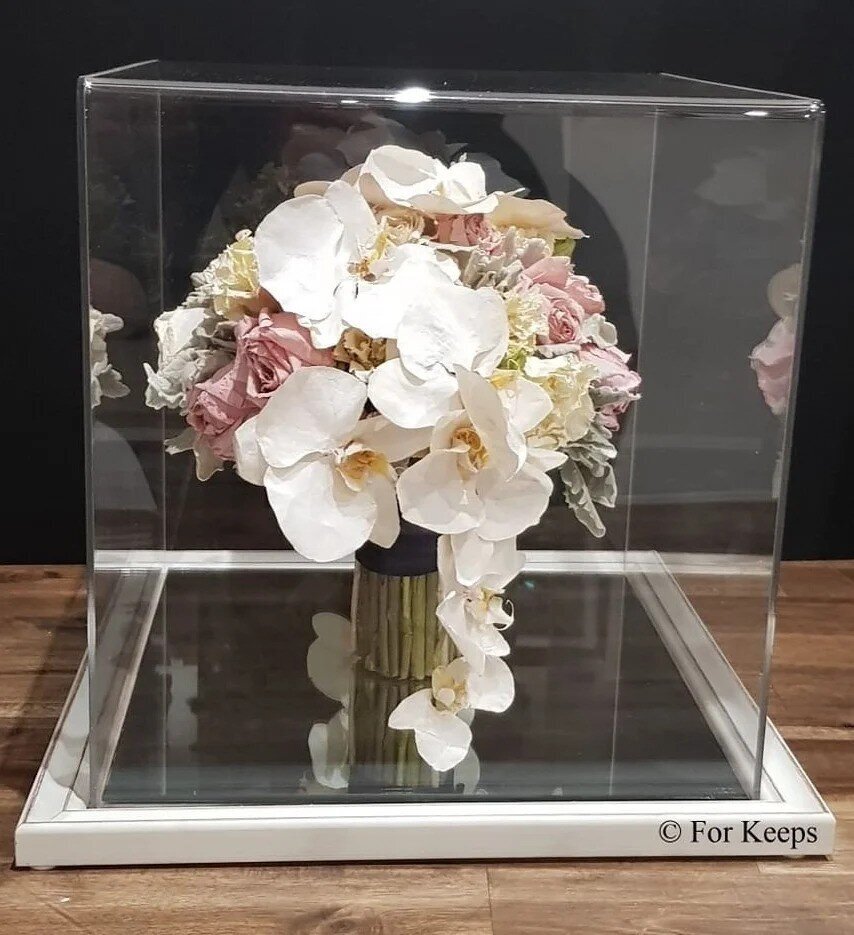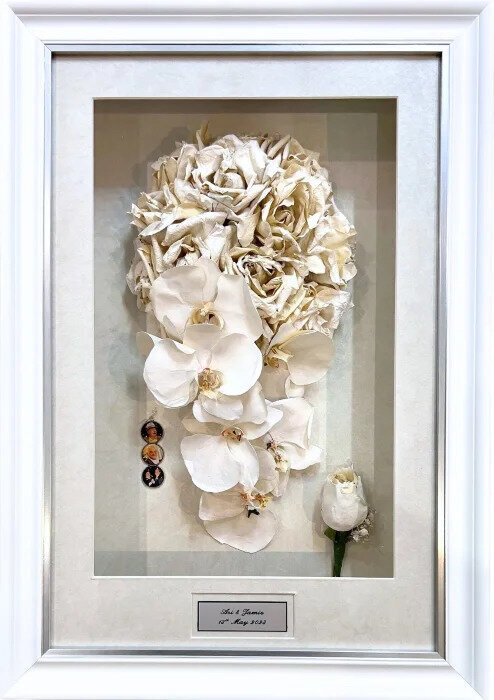Why Preservation Matters in an Age of Throwaway Culture
The Age of Disposable Beauty
We live in an era where almost everything feels replaceable. From fast fashion to home décor, even the most meaningful items often come with an expiry date. Weddings and funerals — two of life’s most profound milestones — are no exception. Couples spend thousands on flowers that are breathtaking for a single day, and families say goodbye to loved ones with arrangements destined for the bin.
At For Keeps®, we believe there’s a better way. In a culture consumed by the temporary, flower preservation isn’t just a luxury; it’s a statement of love, sustainability, and legacy.

The Rise of Throwaway Culture
Modern society thrives on speed. TikTok trends last weeks, clothing collections change overnight, and disposable décor fills our celebrations (Joyner Armstrong, 2022). While these fleeting moments bring temporary joy, they leave us with waste — both physical and emotional.
Flowers, in particular, suffer from this culture. A bridal bouquet that took months of dreaming, or a funeral arrangement symbolising grief and love, too often ends up wilted and discarded. What does it say about us when we throw away the very things that once held our deepest emotions?

The Emotional Cost of Disposability
It isn’t just about flowers. It’s about meaning. When brides call us devastated because they regret not preserving their bouquet, or when families say they wish they’d kept something more permanent from a funeral, what they’re expressing is a sense of lost connection.
Throwaway culture robs us of that. Every bloom carries a story — of a mother’s tears, a father’s pride, a partner’s promise. When they’re gone, those memories can feel less tangible (Harvey & Knox, 2020).
Preservation as an Act of Sustainability
Preservation, when done properly, is more than artistry — it’s stewardship.
At For Keeps®, we use a 48–56 step process developed over decades, working closely with plant physiologists. Every flower is individually treated, strengthened, and protected. We rely on museum-grade materials: UV-protective glass, acid-free mats, lignin-free boards, and conservation sealing that prevents damage for generations.
This isn’t resin. Research shows that resin is a reactive polymer that generates heat during curing, often damaging delicate plant tissue (Xu et al., 2020). Worse still, resin yellows with UV exposure (Park et al., 2019), turning once-beautiful keepsakes into discoloured objects.
Proper preservation, by contrast, is designed to endure, not expire. It’s an eco-conscious choice, turning short-lived décor into lasting family heirlooms.

Why It Matters Now More Than Ever
As sustainability becomes central to how we shop, dress, and celebrate, preservation offers a way to bring that value into life’s milestones. It’s not only about keeping flowers. It’s about keeping love, keeping family, and keeping history alive (Miller, 2021).
References
Harvey, P. & Knox, H. (2020). Objects and Meaning in Everyday Life. Routledge, London.
Joyner Armstrong, C. (2022). “Fast Fashion and Disposable Culture.” Journal of Consumer Culture, 22(1), pp. 44–62.
Miller, A. (2021). The Things We Keep: Material Culture and Memory. University of Chicago Press, Chicago.
Park, J., Lee, S. & Kim, H. (2019). “UV-Induced Degradation of Epoxy Resin.” Polymer Degradation and Stability, 161, pp. 109–117.
Xu, L., Chen, Y. & Zhang, W. (2020). “Thermal Effects in Epoxy Resin Polymerisation.” Journal of Applied Polymer Science, 137(22), pp. 486–498.